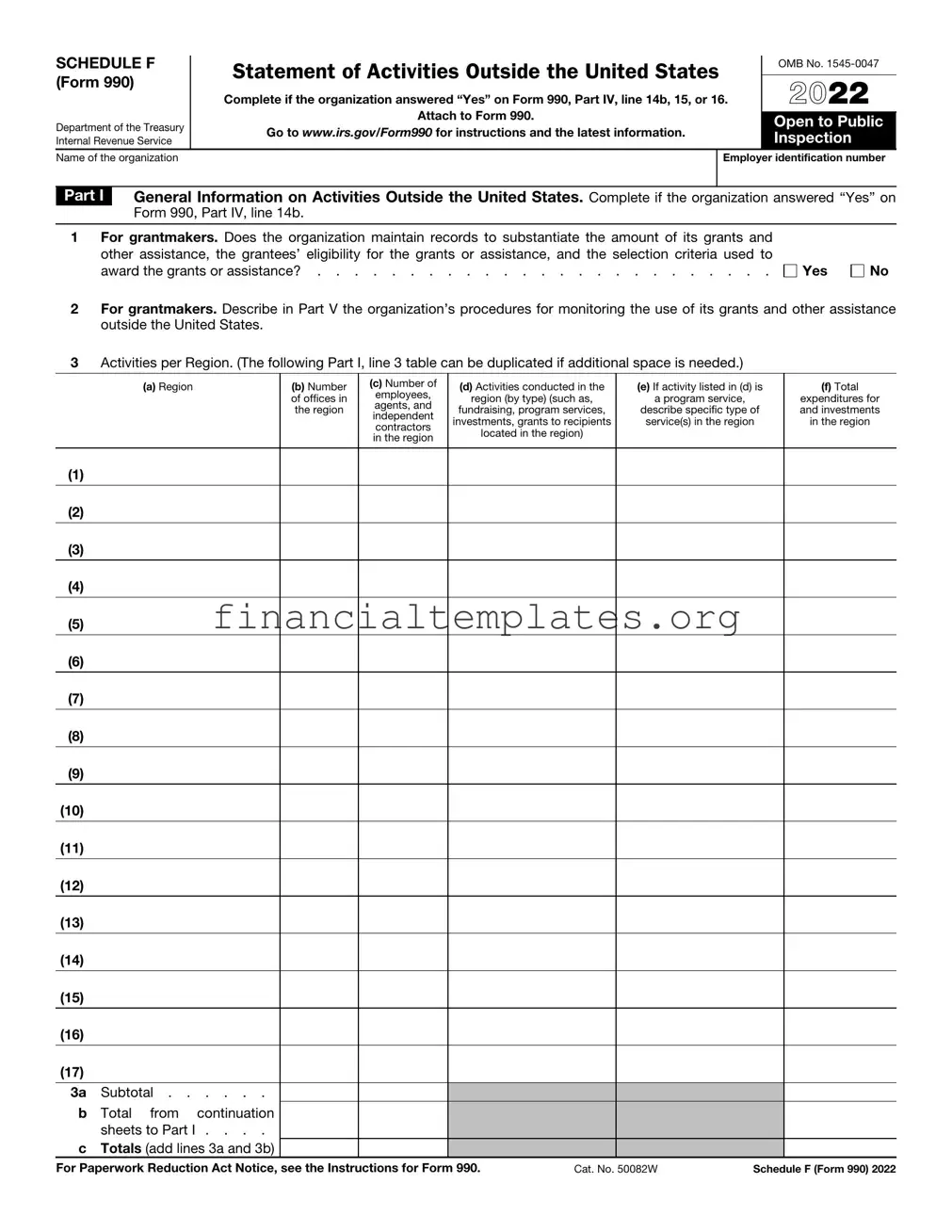The IRS Form 926, "Return by a U.S. Transferor of Property to a Foreign Corporation," resembles the Schedule F in its focus on international transactions. Form 926 is required when a U.S. person transfers property to a foreign corporation, detailing the nature and value of the property transferred. This form ensures compliance with U.S. tax laws on international transfers, similar to how Schedule F tracks activities and financial assistance outside the United States, highlighting the IRS's effort to monitor and regulate international financial activities.
Form 3520, "Annual Return To Report Transactions With Foreign Trusts and Receipt of Certain Foreign Gifts," shares similarities with Schedule F through its emphasis on reporting international financial dealings. This form is used to report transactions with foreign trusts, large gifts, or bequests from foreign entities. Like Schedule F, Form 3520 helps the IRS keep track of money moving across borders, ensuring that individuals and entities comply with U.S. tax obligations related to international activities.
Further paralleling Schedule F, Form 5471, "Information Return of U.S. Persons With Respect to Certain Foreign Corporations," is mandated for U.S. persons who are officers, directors, or shareholders in certain foreign corporations. It serves a similar purpose by requiring detailed reporting of the filer's relationship with the foreign corporation, the corporation's activities, and its financial condition. This enhances transparency and enforces U.S. tax laws on foreign income and operations, akin to how Schedule F addresses activities outside the U.S.
The requirement for Form 8621, "Information Return by a Shareholder of a Passive Foreign Investment Company or Qualified Electing Fund," similarly aligns with Schedule F through the lens of international investment activity. Form 8621 is necessary for taxpayers who hold investments in passive foreign investment companies (PFICs), to report income and gains from these entities. Like Schedule F, Form 8621 aids in ensuring U.S. taxpayers properly report and tax their foreign income, maintaining accountability for overseas investments.
Form 8865, "Return of U.S. Persons With Respect to Certain Foreign Partnerships," is akin to Schedule F in its international purview. Required from U.S. persons who have an interest in, or authority over, a foreign partnership, this form involves reporting the partnership's activities, partners, and financial details. It mirrors the intent of Schedule F by monitoring U.S. entities' involvement in international operations, maintaining oversight on how these activities affect U.S. tax obligations.
Lastly, Form 5713, "International Boycott Report," shares a common ground with Schedule F concerning international regulations and compliance. This form is utilized by taxpayers involved in, or related to, operations in boycotting countries, requiring detailed reporting on the nature and extent of these activities. Similar to Schedule F’s goal of transparency in international dealings, Form 5713 aims to enforce U.S. laws and policies regarding participation in international boycotts, underlining the IRS’s role in regulating cross-border economic activities.





